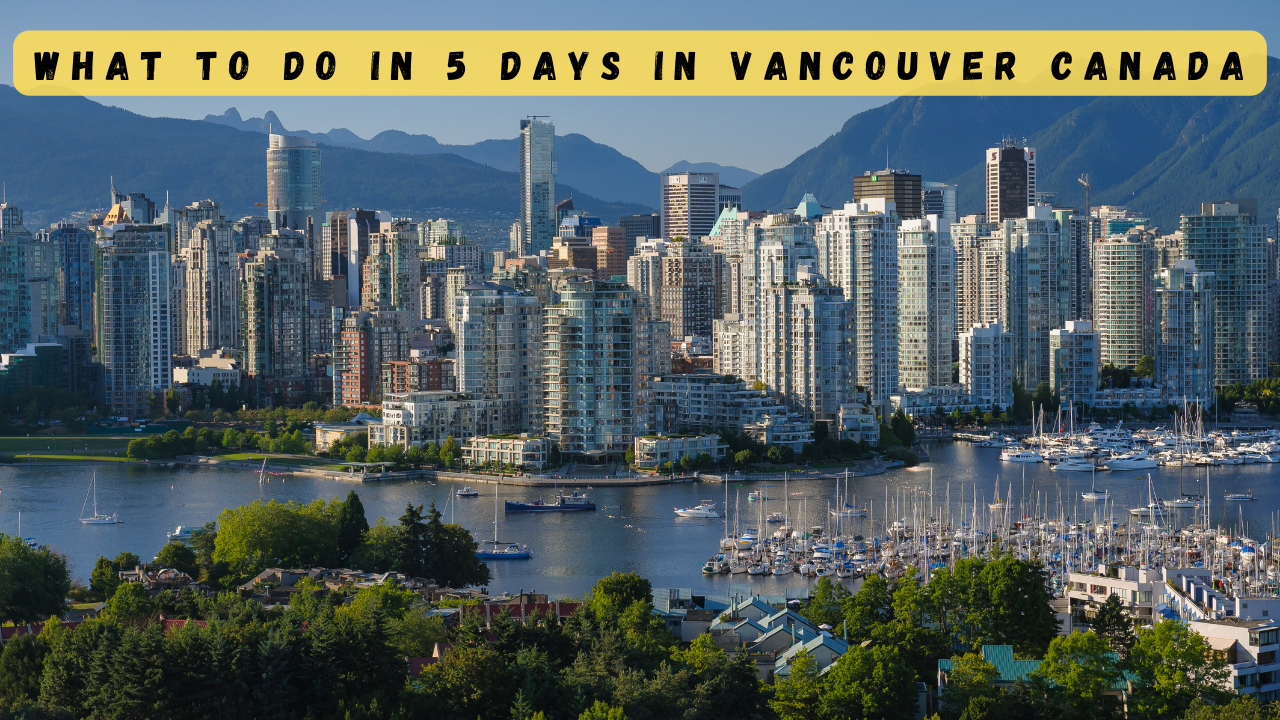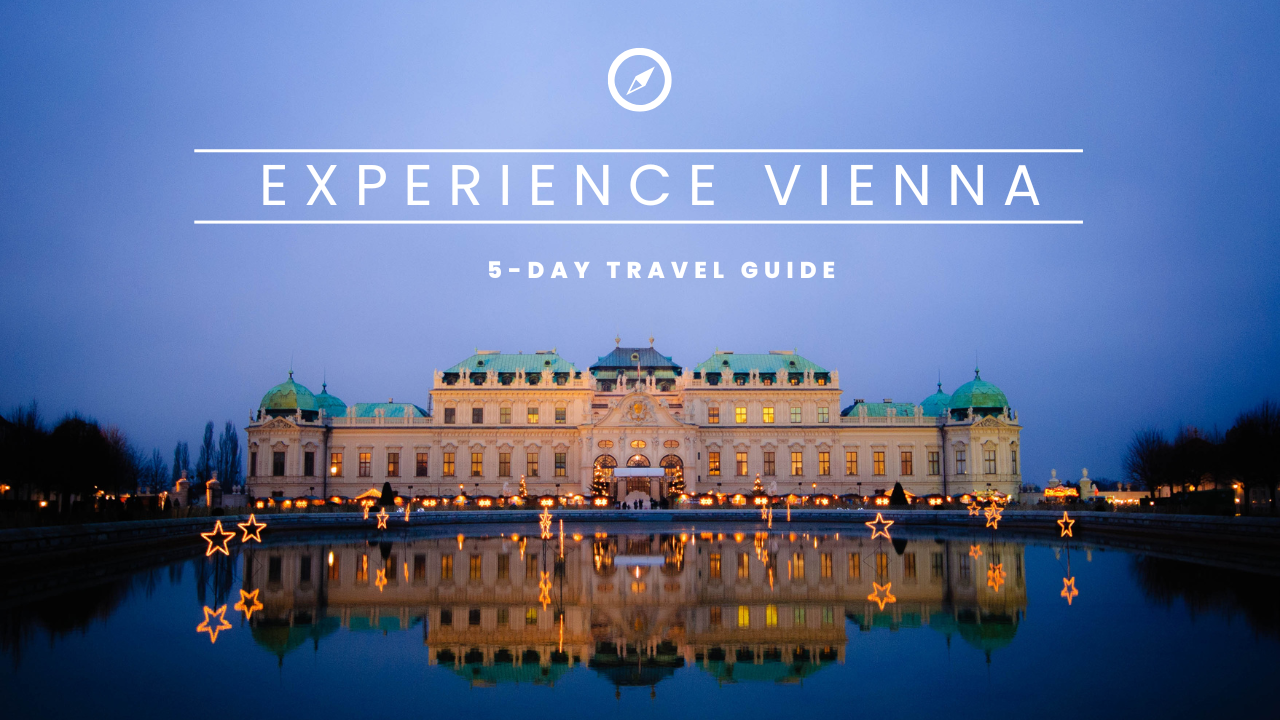Vancouver! This coastal city in British Columbia is a paradise for travelers, where breathtaking nature meets vibrant city life. Surrounded by towering mountains and the vast Pacific Ocean, Vancouver offers something for everyone. Whether you’re here to dive into its rich history, explore its diverse neighborhoods, or indulge in the city’s acclaimed culinary scene, this 5-day itinerary is crafted just for you. Get ready for an unforgettable Vancouver adventure!
Day 1: Exploring Downtown Vancouver & Gastown
Gastown and the Steam Clock
Start your adventure in Gastown, Vancouver’s oldest neighborhood, named after “Gassy” Jack Deighton, a talkative saloon owner who founded the area in 1867. The iconic Gastown Steam Clock is one of only a few working steam clocks in the world. Built in 1977, it combines Victorian design with modern steam-powered mechanics, releasing a cloud of steam every quarter-hour. This clock symbolizes Vancouver’s preservation of history amidst rapid modernization.
Vancouver Lookout at Harbour Centre
For a breathtaking view of the city, head to the Vancouver Lookout at Harbour Centre. Ascend 553 feet in a glass elevator to the observation deck, where you can see the entire cityscape, from the skyscrapers to the North Shore Mountains. The Lookout offers a fascinating perspective on Vancouver’s growth from a logging outpost to one of the world’s most livable cities.
MeeT – A Plant-Based Delight
MeeT is a staple in Vancouver’s vibrant plant-based dining scene. This innovative restaurant offers hearty, delicious vegan meals that appeal to all palates, making it a go-to for foodies and sustainability advocates alike. The restaurant’s creative approach to plant-based dishes has made it a popular choice for those wanting to try something fresh and flavorful.
Vancouver Art Gallery
End your day with a visit to the Vancouver Art Gallery, a cultural landmark showcasing Canadian and Indigenous art. Home to over 12,000 pieces, including the works of Emily Carr, the gallery reflects Vancouver’s diverse artistic heritage. The building itself, a former courthouse, is an architectural gem that holds a significant place in Vancouver’s history.
Day 2: Granville Island & Kitsilano
Granville Island Public Market
Granville Island was once an industrial area, but it has transformed into a hub for creativity and commerce. The Granville Island Public Market is the heart of this revitalized space, showcasing local produce, gourmet treats, and handcrafted goods. It’s a popular destination for food lovers and artisans alike and has become one of Vancouver’s premier cultural districts.
Go Fish for Fresh Seafood
Located on the waterfront, Go Fish is famous for serving fresh, sustainably-sourced seafood. Known for its simple yet delicious fish and chips, Go Fish emphasizes Vancouver’s commitment to environmentally friendly practices and highlights the importance of fresh local ingredients in West Coast cuisine.
Capilano Suspension Bridge
The Capilano Suspension Bridge is one of Vancouver’s most popular attractions, drawing visitors from around the world. Originally built in 1889, this bridge stretches 450 feet across the Capilano River and sways 230 feet above the canyon. Surrounded by the lush Pacific Northwest rainforest, the bridge offers a thrilling experience along with views of the majestic old-growth trees. It’s also an important ecological area, promoting the conservation of Vancouver’s natural heritage.
Kitsilano Beach
Known affectionately as “Kits Beach,” Kitsilano Beach is a favorite among locals and visitors for its scenic views of English Bay and the Vancouver skyline. With a backdrop of the mountains, it’s an ideal spot to relax and enjoy Vancouver’s beach culture. The area is also close to shops and restaurants, making it a perfect blend of city and nature.
Museum of Vancouver
The Museum of Vancouver delves into the city’s rich history, with exhibits covering Indigenous heritage, early European settlers, and Vancouver’s development into a multicultural metropolis. The museum provides a deeper understanding of the city’s social, political, and cultural evolution, making it a valuable stop for anyone interested in Vancouver’s past and present.
The Naam – A Vegetarian Haven
A Vancouver institution, The Naam has been serving vegetarian food since 1968 and is open 24/7. Known for its organic, locally sourced menu, The Naam highlights Vancouver’s commitment to health-conscious, eco-friendly living. It’s the oldest natural foods restaurant in the city and a beloved spot for both locals and visitors seeking wholesome, hearty meals.
Day 3: Discovering Vancouver’s Multicultural Charm
Sun Yat-Sen Classical Chinese Garden
Modeled after the classical gardens of the Ming Dynasty, the Dr. Sun Yat-Sen Classical Chinese Garden is a peaceful oasis in the heart of Vancouver’s Chinatown. This authentic Chinese garden was the first of its kind built outside of China, symbolizing Vancouver’s deep cultural ties to its Chinese community. The garden’s intricate design, koi ponds, and traditional architecture make it a serene and picturesque destination.
Chinatown
Vancouver’s Chinatown is one of the largest and oldest in North America. Established in the late 19th century, it has a rich history tied to the contributions of Chinese immigrants who helped build the Canadian Pacific Railway. Today, Chinatown is a bustling area with traditional markets, authentic restaurants, and beautiful street art celebrating its cultural heritage.
Bao Bei – A Fusion of Tradition and Innovation
Located in Chinatown, Bao Bei blends classic Chinese flavors with modern influences, embodying Vancouver’s diverse food scene. The restaurant’s innovative approach highlights the city’s reputation as a culinary capital, drawing on both tradition and experimentation to create unique, flavorful dishes.
Strathcona Neighborhood
Strathcona is Vancouver’s oldest residential neighborhood, rich in history and full of character. Known for its vibrant community, historic homes, and art studios, Strathcona offers a glimpse into Vancouver’s past while embracing modern creativity. The neighborhood has retained much of its historic charm, making it a fascinating area to explore.
Ask for Luigi – Italian Charm
A cozy Italian eatery, Ask for Luigi is famous for its homemade pasta and rustic charm. Located in Strathcona, it’s a favorite among locals who appreciate its relaxed, intimate atmosphere. The restaurant’s dishes reflect a dedication to quality and simplicity, making it a must-visit for Italian food lovers.
Day 4: Stanley Park & The West End
Stanley Park
One of the largest urban parks in North America, Stanley Park is a natural oasis surrounded by cityscape. It’s home to ancient cedar, fir, and hemlock trees, as well as famous totem poles that honor the region’s Indigenous culture. With over 1,000 acres of trails, beaches, and gardens, Stanley Park is a testament to Vancouver’s dedication to preserving its natural beauty.
The Teahouse in Stanley Park
Nestled in the heart of the park, The Teahouse is a fine-dining restaurant offering spectacular views of the coastline and mountains. Known for its classic West Coast cuisine, it’s an ideal spot to enjoy a meal surrounded by nature’s splendor. The Teahouse has become an iconic dining destination, loved for its ambiance as much as its food.
West End Beaches
Vancouver’s West End is famous for its beaches, where the tranquil waters of English Bay meet the golden sand. English Bay Beach and Sunset Beach offer picturesque views and are popular spots for swimming, sunbathing, and picnicking. The beaches exemplify Vancouver’s unique combination of city life and natural beauty.
Davie Street and LGBTQ+ Pride
Known for its vibrant rainbow crosswalks, Davie Street is the heart of Vancouver’s LGBTQ+ community. The area celebrates diversity and inclusivity with numerous bars, eateries, and events. Davie Village is a cultural landmark that embodies Vancouver’s welcoming spirit and commitment to equal rights.
Kingyo Izakaya – A Taste of Japan
Kingyo Izakaya brings authentic Japanese dining to Vancouver’s West End. This lively izakaya offers a variety of small dishes that showcase the depth of Japanese flavors and Vancouver’s multicultural food scene. The restaurant’s bustling atmosphere and unique menu make it a memorable dining experience.
Day 5: Grouse Mountain & Robson Street
Grouse Mountain Skyride
Take the Grouse Mountain Skyride for a scenic ascent that offers panoramic views of Vancouver, the ocean, and surrounding forests. Grouse Mountain is known as “The Peak of Vancouver” and is a popular destination for outdoor enthusiasts year-round, with hiking trails in summer and skiing in winter. The Skyride provides an unforgettable perspective of Vancouver’s natural landscape.
The Observatory on Grouse Mountain
Located at the top of Grouse Mountain, The Observatory is a fine-dining restaurant that combines gourmet cuisine with stunning views. It’s an ideal spot to enjoy a luxurious meal while overlooking the breathtaking scenery of the Pacific Northwest.
Robson Street for Shopping
Robson Street is Vancouver’s premier shopping district, filled with a mix of international brands and unique boutiques. Known as the city’s fashion hub, it attracts locals and tourists alike who come to shop, dine, and experience the urban energy of Vancouver.
Granville Street’s Nightlife
As night falls, Granville Street comes alive with a bustling nightlife scene. From vibrant bars to lively nightclubs, Granville Street offers something for everyone. It’s the perfect place to celebrate your last night in Vancouver, showcasing the city’s lively, eclectic spirit.
Siegel’s Bagels
End your Vancouver journey with a Montreal-style bagel at Siegel’s Bagels, a beloved 24-hour bakery that has been serving freshly baked bagels since 1990. Their hand-rolled, boiled bagels are a local favorite and a delicious late-night snack after a day of exploration.
Best Time to Visit Vancouver
The ideal time to visit Vancouver depends on your interests. Summer (June to September) is perfect for outdoor activities, with temperatures ranging from 68°F to 86°F. Spring and Fall offer mild weather, while Winter is ideal for those interested in skiing and snowboarding at nearby resorts like Whistler.
Essential Travel Tips for Vancouver
- Weather Gear: Vancouver’s weather can be unpredictable. Dress in layers and pack a waterproof jacket.
- Public Transit: A Compass Card gives you unlimited access to buses, SkyTrain, and SeaBus.
- Food Diversity: Vancouver is a food lover’s paradise, with plenty of vegan, vegetarian, and gluten-free options.
- Respect Nature: Follow “Leave No Trace” principles to preserve Vancouver’s natural beauty.
Explore Vancouver with an open heart, respect its rich indigenous heritage, and savor every moment in this beautiful city. Whether you’re here for the food, the scenery, or the culture, Vancouver promises an experience you’ll never forget.
Don’t forget to subscribe to WorldInDays for more itineraries and travel tips!

